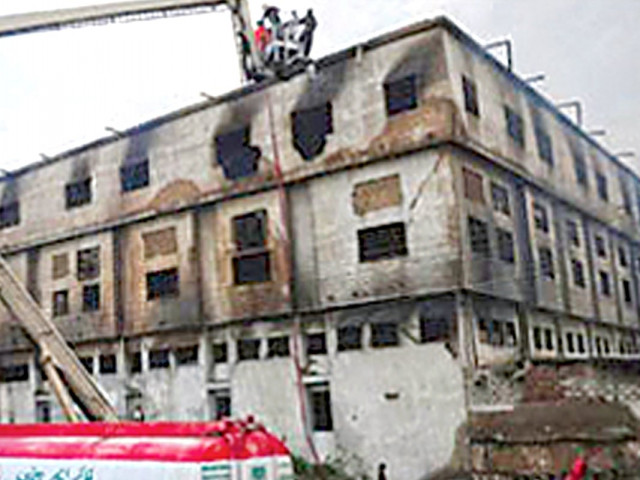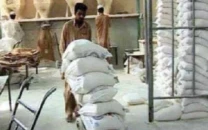Baldia factory fire: Tribunal recommends closing down police’s forensic department
Forensic officials admitted that their department lacks facilities to find out what caused the fire.

On September 11, the tragic incident at Ali Enterprises claimed the lives of more than 250 people. Later, the provincial government constituted a two-member tribunal to investigate the cause of fire.
The inquest was completed within 12 days with more than 40 people, including government officers, fire fighters, factory workers and doctors, recording their statements.
In their recommendations, Justices (retd) Zahid Kurban Alavi and Khalilur Rehman Shaikh have advised the Sindh government to shut the police forensic department, which has failed to serve its purpose to resolve crimes through scientific methods. From each floor of the ill-fated garments factory, forensic officials could only collect pieces of burnt wires and cloth that were handed over to police for further investigation, the former judges wondered.
“It is a sad reflection on the competency and efficiency of this [forensic] department,” the report says. In its findings, the panel has termed an electrical short-circuit as the most plausible cause behind the blaze.
Two forensic officials - inspector Bashir Ahmed and sub-inspector Qalandar Bux - had admitted before the tribunal that their department neither had the facilities nor the experts to investigate any crime let alone find out the exact cause of fire.

In the absence and lack of any competent facility or persons to carry out modern scientific investigation, this department may be shut down as there are no tangible results, the report stated.
Other factors that worsened the disaster
The fire brigade’s late arrival, unavailability of water hydrants near the surrounding areas and traffic congestions were also stated as reasons for the loss of lives, with particular reference to “VVIP movement” on the main thoroughfares that have frequently resulted in fatal delays. The involvement of too many agencies in the investigation of the factory was also berated as “it may tamper the evidence”.
Citing eyewitness, the tribunal wrote that most factory workers died of cardiac arrest or carbon monoxide poisoning as paper, fabric, polythene, artificial leather (rexine) or other materials caught fire.
More recommendations
Depending on case to case basis, fire hydrants should be installed inside and outside the factories and workers given fire fighting training. Each building floor should have smoke detectors and fire alarms installed, the tribunal suggested.
Published in The Express Tribune, December 5th, 2012.

















COMMENTS
Comments are moderated and generally will be posted if they are on-topic and not abusive.
For more information, please see our Comments FAQ